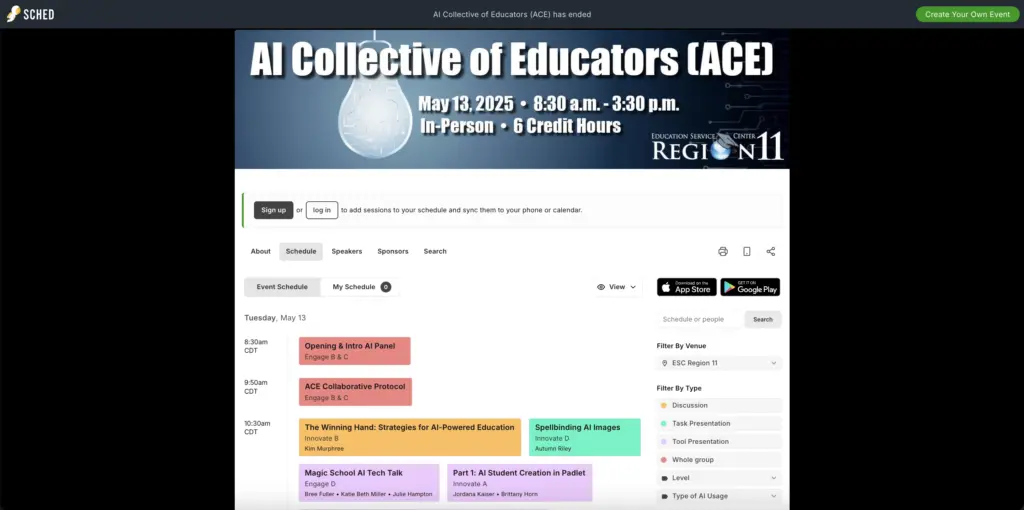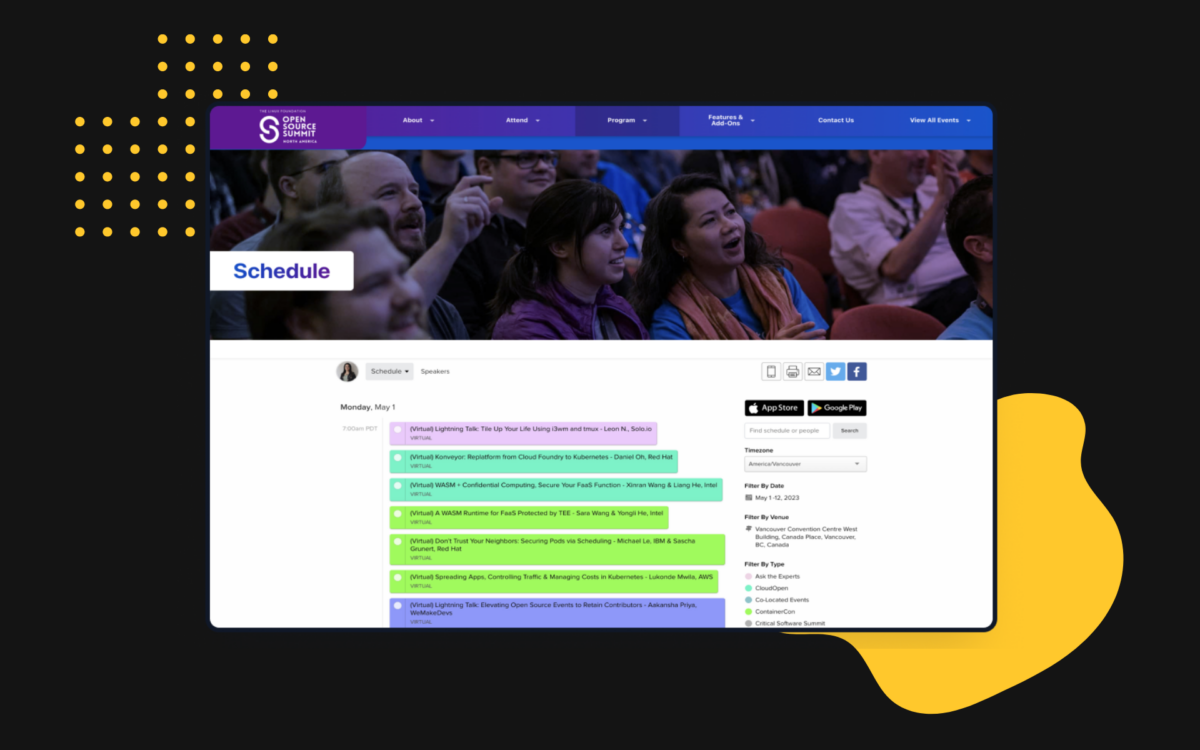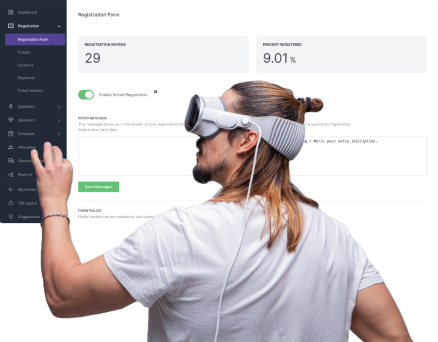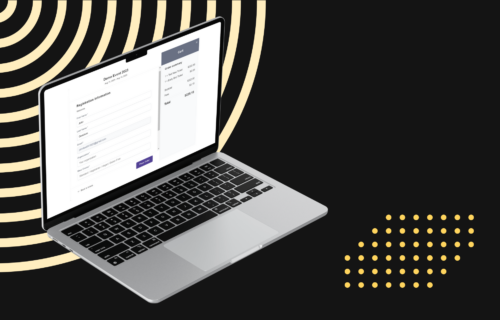Ever walked into an event where no one seemed to know what was happening next? The schedule’s unclear, sessions run long, and attendees are left guessing. Nothing derails an event faster than a messy schedule.
A great event agenda does more than just list times and speakers. It brings structure, focus, and energy to your event. In this guide, we’ll walk you through how to build an agenda that supports your goals, avoids common planning problems, and makes your event feel organized and intentional.
Main Takeaways
Table of contents
- 1 Main Takeaways
- 2 6 Reasons Why It’s Important To Have A Clear Event Agenda
- 3 What Are The Core Elements of a Strong Event Agenda
- 4 What’s a Good Event Planning Timeline
- 5 How To Structure a Good Agenda As An Event Planner
- 6 Best Tools For Creating and Manage Your Event Agenda
- 7 What Does an Event Agenda Look Like in Sched?
- 8 FAQs
- 8.1 What should an event agenda include?
- 8.2 Why is having a clear event agenda important?
- 8.3 How early should you start planning your event agenda?
- 8.4 How do you structure an effective event agenda?
- 8.5 What’s the best way to share an event agenda with attendees?
- 8.6 What tools help with event agenda planning and sharing?
- A clear event agenda keeps your event on track. It helps your team, guest speakers, and attendees stay aligned, which helps to reduce stress.
- Strong agendas start with clear goals. Every successful event begins with knowing your purpose and building the schedule around it.
- There’s no one-size-fits-all timeline. Larger events need 4-6 months of planning, while smaller workshops can come together in just a few weeks.
- Agenda structure matters a ton. Break your day into clear blocks with space for content, transitions, networking, and reflection.
- Flexible planning is smart planning. Build in buffer time and have a backup plan for changes. It’ll keep your event running smoothly.
- Great agendas are shared early and often. Use event planning tools like Sched to give attendees access to real-time updates and personalized schedules.
6 Reasons Why It’s Important To Have A Clear Event Agenda
An event agenda is the structure that keeps your event focused and on track. Here’s why it matters:
- Keeps everyone on the same page: Your team, speakers, and attendees all know what’s happening and when.
- Sets expectations early: Attendees can plan their day, choose sessions, and show up prepared.
- Improves time management: A clear schedule reduces delays, prevents sessions from running long, and helps keep everything moving.
- Highlights value for attendees: A thoughtful agenda showcases your event’s content and makes it easier for people to decide to register.
- Supports better decision-making: Organizers can allocate resources, staff, and space more effectively with a structured timeline.
- Builds trust and professionalism: A well-organized event reflects well on your brand and helps attract return attendees and partners.
What Are The Core Elements of a Strong Event Agenda
Every agenda should include these five building blocks:
1.Defined Purpose and Goals
Why are you hosting this event? What outcomes do you want? Define why you’re hosting the event and what success looks like, whether it’s professional development, networking, or community-building.
2. Detailed Session Information
List out the topics, formats (keynote, panel, workshop), and speaker names so attendees know what to expect at all times.
3. Thoughtful Timing and Flow
Build a clear timeline with defined start and end times, breaks, and buffers between sessions. A smooth flow keeps everyone engaged and reduces confusion during the event.
4. Clear Communication Plan
Decide how attendees will access the agenda (via a website, email, or an event app like Sched), and make it easy for them to find updates in real time.
5. Built-in Flexibility
Even with a solid plan, things can shift. Leave room for flexibility and have a process in place to handle speaker changes, time overruns, and tech issues.
What’s a Good Event Planning Timeline
The best time to start planning your agenda depends on the size and complexity of your event. Below’s a general guide:
For Larger Events (multi-day conferences, districtwide professional development, or public events)
4-6 Months Before
- Set your goals and event budget
- Book the venue
- Reach out to key speakers or session leaders
3-4 Months Before
- Finalize your agenda format (tracks, breakout rooms, etc.)
- Confirm logistics (A/V, catering, accessibility)
- Kick off early event marketing or registration
1-2 Months Before
- Build the full session schedule
- Confirm speaker info and travel
- Push out reminders to attendees
1 Week-1 Day Before
- Finalize printed or digital materials
- Set up your registration and support teams
- Share last-minute updates or schedule changes
For Smaller Events (school PD days, workshops, or internal training)
Smaller events can come together more quickly, but having a clear agenda still makes a big difference.
2-4 Weeks Before
- Define the event purpose and goals
- Choose session formats and facilitators
- Draft a simple agenda (even just one track)
1 Week Before
- Confirm timing, room setup, and materials
- Send reminders and share the schedule with attendees
1-2 Days Before
- Do a quick run-through with your team
- Prep signage, tech, and any printed materials
Even short events benefit from clear structure and communication. Your agenda helps everyone show up ready and focused.
How To Structure a Good Agenda As An Event Planner
Break your day, or days, into easy-to-follow blocks that support engagement and purpose:
- Set up a strong start to your event
Kick off with welcome remarks or an energizing keynote. It helps set the tone for the rest of the event and helps attendees feel anchored from the start.
- Plan your content blocks
Mix session types (workshops, panel discussions, roundtables), to keep things dynamic. Add time for transitions, setting up tech, and having mini breaks between segments.
- Build in breaks and networking
Recharge time matters more than you think. Include coffee breaks, lunch, or dedicated networking sessions so people have time to connect and come back refreshed.
- End with intention
Wrap things up with a final keynote, group reflection, or panel recap. Revisit the goals of your event and leave attendees with a clear takeaway.
Best Tools For Creating and Manage Your Event Agenda
Using event planning and project management tools can help you improve collaboration with your team, track real progress, and keep everyone on the same page. Here are a few popular tools to consider:
- Sched: Sched is an easy-to-use event management platform that provides a range of features, including event registration, ticket sales, and attendee management. The centralized platform also offers tools for creating and sharing event agendas with attendees on all devices.
- Trello: It’s a visual project management tool that allows you to create boards, lists, and cards to track tasks and deadlines. It is a great tool for collaborative event planning and can be customized to fit your specific needs.
- Slack: Slack is a communication platform that allows you to create channels and chat with your team in real time. It is an efficient way to stay connected, share updates, and discuss event-related matters.
- Google Drive: Google Drive offers a suite of productivity tools, including Google Docs, Sheets, and Calendar. These tools enable real-time collaboration, document sharing, and easy access to important files and schedules.
What Does an Event Agenda Look Like in Sched?
You don’t need to build a great agenda from scratch. With Sched, you can create a beautiful, mobile-friendly event schedule that attendees can access anywhere.
Here’s an example of what your agenda could look like once it’s live in Sched 👇
Each session includes the title, speaker info, location, and a built-in option to bookmark or add it to your personal calendar.

Want to build something like this for your next event? Start your Sched free trial today (no credit card needed).
FAQs
What should an event agenda include?
A complete event agenda should include the event’s purpose, a clear schedule of sessions, speaker names, start and end times, built-in breaks, and instructions for how attendees can access it, either on a mobile app, website, or printed handout. It should also include buffer time and have a backup plan for changes.
Why is having a clear event agenda important?
A clear event agenda keeps everyone aligned and reduces confusion. It helps attendees know where to go and what to expect, gives speakers structure, and ensures that organizers stay on time and meet their goals. It also signals professionalism and improves the overall attendee experience.
How early should you start planning your event agenda?
Start planning your event agenda four to six months in advance for large conferences or K-12 school events. For smaller workshops or PD days, 2 to 4 weeks can be enough. The key is to define your goals and session format early, then build out timing and logistics with enough room to make adjustments.
How do you structure an effective event agenda?
Break your event agenda into blocks that support energy and focus: Start with a welcome or keynote, then alternate between content sessions and breaks. Include networking time and end with a strong closing or recap. Leave room between sessions to reset and reset both mentally and logistically.
Share the event agenda on your event website and in confirmation emails, and use a scheduling platform like Sched to let attendees build personalized schedules. Mobile-friendly access and real-time updates make it easier for people to stay informed and engaged throughout the day.
What tools help with event agenda planning and sharing?
Sched is the best event management platform for building, updating, and sharing a professional agenda with attendees. It lets you manage speakers, sessions, and timing in one place. Other useful tools include Trello for planning tasks, Slack for team communication, and Google Drive for shared documents and calendars.









